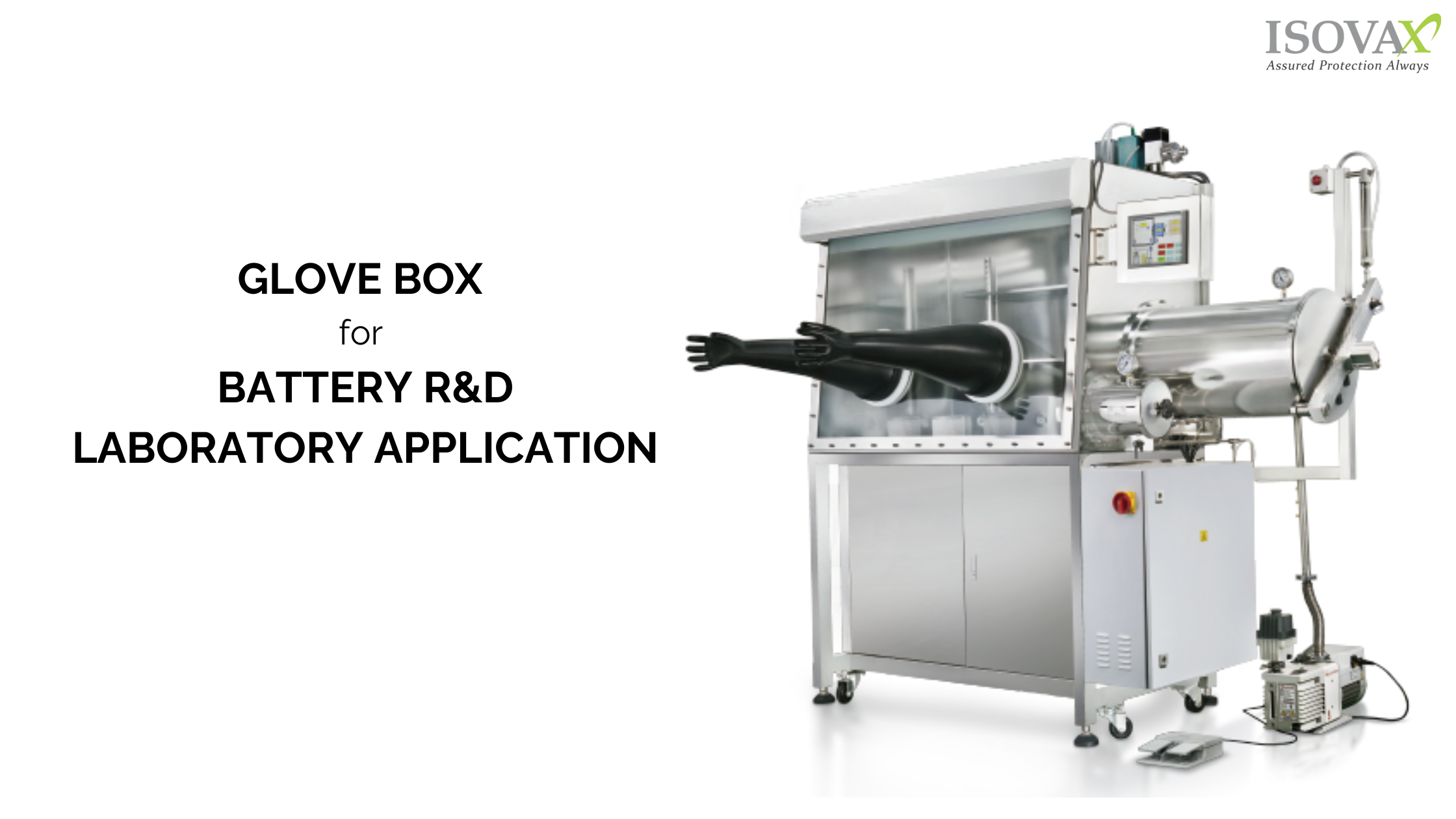
25 Aug Glove box for Battery R&D Laboratory application
Glove boxes, also known as isolation chambers or controlled atmosphere enclosures, are essential tools in various industries, including battery research and development. They provide a controlled environment with low levels of moisture and oxygen, allowing researchers and manufacturers to work with sensitive materials, such as lithium-ion batteries, under optimized conditions. This essay explores the significance of glove boxes in battery applications, discussing their purpose, benefits, and contributions to advancing battery technology.
Purpose of Glove Boxes in Battery Applications:
Glove boxes play a crucial role in battery research, development, and manufacturing due to the highly reactive nature of battery materials, particularly in lithium-ion battery technology. Lithium-ion batteries involve the use of materials like lithium metal, lithium-ion cathodes, and electrolytes that are sensitive to moisture and oxygen. Even trace amounts of impurities can compromise battery performance, safety, and longevity. Glove boxes provide an isolated environment with controlled humidity and oxygen levels, minimizing the risk of contamination and ensuring consistent battery performance.
Benefits and Features of Glove Boxes:

Material Integrity:
Glove boxes maintain the purity of battery materials by preventing exposure to atmospheric moisture and oxygen, thus enhancing the overall performance and lifespan of batteries.
Safety:
Lithium-ion batteries can be hazardous if mishandled. Glove boxes offer a controlled environment that reduces the risk of short circuits, fires, and explosions, ensuring the safety of researchers and workers.
Precise Testing:
Researchers can perform accurate experiments and tests within the controlled environment of a glove box, enabling them to collect reliable data on battery performance and behavior.
Inert Atmosphere:
Glove boxes can be filled with inert gases like nitrogen or argon, creating an oxygen-free environment that prevents reactions with sensitive battery materials.
Customization:
Glove boxes can be customized to accommodate specific research needs, allowing researchers to create unique atmospheres and conditions for various battery studies.
Contributions to Advancing Battery Technology:
Glove boxes have significantly contributed to the advancement of battery technology in several ways:
Material Development:
Researchers can experiment with new materials for electrodes, electrolytes, and separators without the risk of contamination, facilitating the discovery of novel, high-performance battery components.
Safety Testing:
Battery safety is paramount. Glove boxes enable thorough testing of battery designs, materials, and configurations to ensure they meet safety standards and regulations.
Scale-Up Processes:
When transitioning from lab-scale to commercial-scale battery production, glove boxes aid in maintaining the integrity of materials during the scaling process.
Exploring Beyond Lithium-Ion:
As the battery field expands to include new chemistries (e.g., solid-state batteries), glove boxes offer a controlled environment to research and develop these emerging technologies.
Efficiency Improvements:
Glove boxes facilitate streamlined research workflows, allowing researchers to focus on innovation rather than combating issues related to contamination and impurity.
Summazring the topic:
Glove boxes are indispensable tools in battery research and development due to their ability to create controlled environments that preserve the integrity of sensitive battery materials. By preventing contamination, ensuring safety, and enabling precise testing, glove boxes play a pivotal role in advancing battery technology. As the demand for high-performance batteries continues to grow in applications such as electric vehicles and renewable energy storage, the role of glove boxes in driving innovation and improving battery performance remains critical.



Sorry, the comment form is closed at this time.